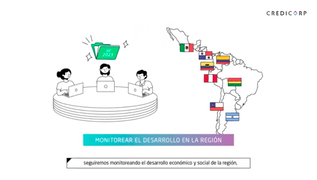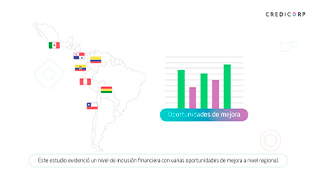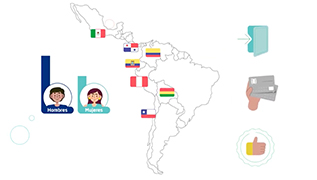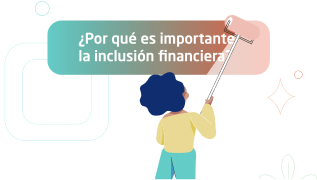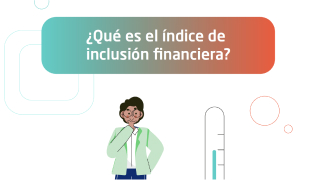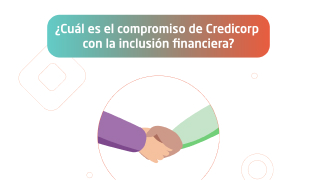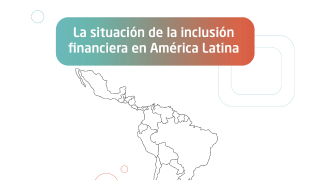The Study
The objective of the study was to develop an
indicator of financial inclusion that allows
monitoring this issue in 8 countries of the
region.
1,200 household surveys were
carried out per country, at the urban and rural
levels, except in Peru, where 5,000 were carried
out. The universe of participants was made up of
men and women over 18 years of age.
The margin of error is +-2.8% with
a confidence level of 95%.
The Index
Credicorp's Financial Inclusion Index
(IIF)
evaluates the level of financial inclusion of
countries based on its efficiency in 3
dimensions: Access,
Use and
Quality Perceived.
Access
Use
Quality perceived
Access
This dimension measures the
capacity of individuals to
access or use formal
financial services.
|
Sub-dimension
|
Indicator |
|
Financial
infrastructure
|
|
|
Knowledge of
products
|
|
|
Product
possession
|
-
3
Number
of
savings/insurance
products
that
are
possessed.
-
4
Number
of
credit
products
that
are
possessed.
-
5
Number
of
entities
of
which
you
are
a
customer.
-
6
Possession
of
credit
products
in a
formal
entity.
-
7
Number
of
barriers
to
having
financial
products.
|
Use
This dimension measures the
intensity, frequency and
permanence of use or
utilization of financial
services and products.
|
Sub-dimension
|
Indicator |
|
Basic
transactions
|
|
| Income |
|
| Savings |
|
Quality perceived
This dimension is comprised
of two sub-dimensions: trust
and perception of the
quality of the financial
system and assesses aspects
such as general image of
financial entities, ease of
obtaining products or
variety of product
offerings, breadth of the
financial system, among
others.
|
Sub-dimension
|
Indicator |
| Trust |
|
| Quality |
-
13
General
assessment
of
the
image
of
financial
institutions.
-
14
General
assessment
of
the
ease
of
obtaining
a
savings
or
credit
product.
-
15
General
assessment
of
the
physical
extent
of
the
financial
system.
-
16
General
assessment
of
the
variety
of
savings
and
credit
products
offered
by
the
financial
system.
-
17
General
assessment
of
the
costs
to
users
of
the
financial
system.
-
18
General
assessment
of
the
usefulness
of
digital
media.
-
19
Perceived
security.
|
| Savings |
|



